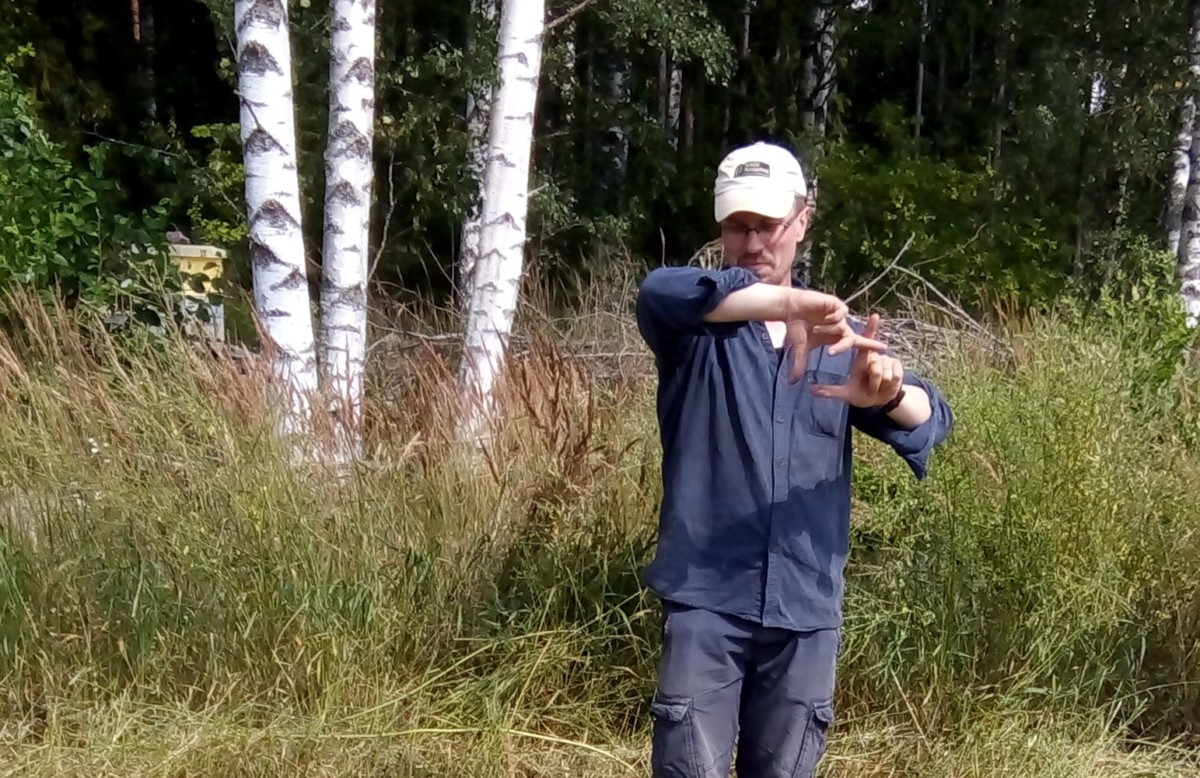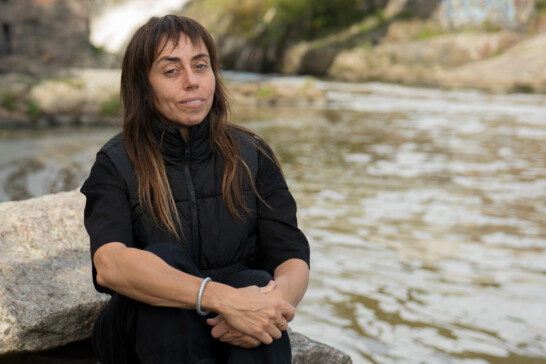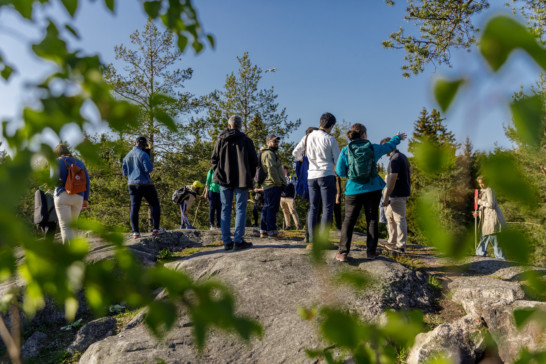News
The Baltic Sea and agricultural soil health

The artist Jana Winderen, invited to conceive IHME Commission 2020, and IHME Helsinki’s Director-Curator Paula Toppila interviewed Tuomas Mattila to find out more about phosphorus run-offs from agricultural land into the Baltic Sea. Jana is interested in finding out more about the changes that have occurred in the Baltic, and the reasons behind eutrophication and blue-green algae. With emissions from industry into the Baltic being cut down over the last few decades, the accusing finger points to agricultural emissions.
Tuomas Mattila is a mathematician, chemist, environmental scientist and farmer, who runs his own Kilpiä family farm in Pusula, Finland. He researches soil health and practises sustainable farming. The World Wild Life Fund named him Finland’s Baltic Sea Farmer of the Year 2018.
The connection between water systems and the soil
Tuomas Mattila (TM): I have studied networks of environmental problems and it always comes down to agriculture and soil in the end. Because I like to solve problems, I focused on this particular one and have been helping farmers to understand better how their soil is doing; the health of the soil. I both study and try out in practise how the soil can be managed to give better ecosystem services, productivity and general welfare.
The same challenges arise when dealing with water systems and soil. We cannot see under the soil, and actually in good soil one quarter of it is water; it is all connected through water films, which are connected to fresh water. The fresh water we see is just a small fraction of the freshwater body in the landscape.
I have worked with problem soils as a way to get farmers interested. When I ask farmers: Do you have a problem field? they start to think: Yeah, there is this field that is always difficult. Then we go there and start looking at what is happening with the water and the soil, and we can start a discussion on soil health. Everything would work much better if the soil were like a sponge and not like concrete.
Phosphorus hotspots
Jana Winderen (JW): What is it in farming that causes phosphorous run-offs to Baltic Sea?
TM: A lot of the phosphorus run-offs from soil are from just a small percentage of the whole farm’s land area, so there are these hotspots. We don’t know where they are, we don’t know what they are, but in many studies where they have done detailed mapping of farm land areas, it is only a small percentage of the land that causes the problem. This is good news for the farmers, because currently they feel guilty about emissions into the Baltic Sea, and have tried to mitigate emissions for maybe the last 30 years. Still, they constantly get the message that agriculture is the biggest emitter and we need to do more.
There is something called “legacy phosphorus” that is important here: it is the legacy of all the previous generations of farmers and all the years of farming. When more phosphorus is added to the soil than is removed by the crop (and run-off), phosphorus is accumulated in a large reserve. The phosphorus has accumulated in the soil, accumulating differently in different parts of the soil. Some places with agricultural soils have huge amounts of legacy phosphorus and, even if we stopped farming right now, it would take several decades for the phosphorus to gradually leach away and erode in the water.
Another thing is that many of these top concentrations are near animal operations, where manure has been spread for a long time. The finding on hotspots changes the mindset. It’s not that farmers need to stop what they are doing, but instead we need to find and disarm these phosphorus bombs that are ticking away somewhere.
Work to prevent erosion
JW: Do you know how this could be done?
TM: There are two components: the first is hydrology. Water can be visualized as running at 90 degrees to the contour; it takes the shortest route out of the field. If you look at the contour map anywhere, you see that there are places where water concentrates at focal points or in streams in the field. These kinds of water-transmitting channels and corridors in the landscape are critical for managing the water, and also the phosphorus flows in the field.
The second part is how much phosphorus there is in these critical parts of the field. That would require taking soil samples. But then again, one soil sample cost 20 euros, so it is expensive for farmers to take high-resolution samples from the whole farm area.
JW: Do you think this could be financed by the State; be a political decision?
TM: They could, but quite the opposite has been done so far. Agricultural subsidies have been used as a kind of social support. The idea is that we spread out agricultural subsidies among farmers to keep them in operation, as it wouldn’t be profitable otherwise. If you were to do this the other way and target the biggest emission sources, and do what is necessary to remove them, it would change the financial situation. If there are no emissions hotspots on a farm, there would be no reason to pay subsidies, which would result in large financial losses for many of them.
On our farm we experienced the flattening of a hill over 50 years. Hillslopes that were great ski slopes for the previous generation had got less steep. And if you think of the amount of land lost there, it’s huge. Now we are growing apple and pear trees on those steep hillsides, and we have terraced them. The roots hold the land together, but also the land is now shaped to follow the contours. These steep hills are erosion hotspots. Stopping the erosion process by doing this is one of the reasons why the WWF nominated us Baltic Sea Farmers of the Year in 2018.
EU agricultural-policy reform
JW: How does the EU relate to this subsidy issue?
TM: We are in the middle of the new common agricultural-policy reform in the EU. The initial European Commission proposals for the CAP reform were very well justified, but they were very strict, such as “no bare soil during erosion-risk seasons”, protection of organic soils, and minimizing tillage on erosion-prone slopes. These were also structured as conditions for getting any subsidy. The conditions would have solved many problems with erosion, but they have met with widespread opposition from member countries. Also the proposed eco-schemes could have allowed priority setting for phosphorus hotspots, but it seems Finland is not implementing those, either.
There is a battle within subsidy policy between making the subsidies effective tools for emission reduction and making the subsidies easily applied for so they get widespread support. But the struggle is between the agricultural lobby and the EU, not between the farmers and the environment. Farmers whose operations are profitable are very interested in improving their soils and controlling erosion. No farmer wants to lose good topsoil.
Rye flour, rapeseed oil, herring and blueberries
JW: You were also involved in the Foodweb lunch plate project in 2012. How did that work out?
TM: In this project we calculated the effect of lunch meals: the carbon footprint, eutrophication, pesticide input, nutritional input from the food, and chemical exposure. People are interested in comparing the nutritional value of different kinds of meals. For me, an unpublished outcome was that I was looking at the optimal meal, the meal with the least emissions, but with good nutritional quality. To our surprise it was always the same result: rye flour, rapeseed oil, herring and blueberries.
Dietary choices get overplayed in the discussion of eutrophication. Sometimes it is said that eating less meat would reduce emissions into the Baltic Sea, but what is the cause-and-effect chain? Let’s go through this thought experiment. If we think of people eating less meat and therefore reducing the land area to grow the feed – what would you do with the land? Would it disappear? No, so then it could be reforested. The economy would lose some farmers, but they could work in factories instead. What happens to the land that has been reforested? That depends on the amount of legacy phosphorous there. Was the area that was reforested a phosphorous hotspot? Probably not. Maybe the first areas to be reforested would be the least productive in terms of phosphorus. (Or maybe the Finnish food system would start exporting more food.) You see that the reality is a lot messier.
If you want water bodies to have a good ecological status soon, I don’t think leaving meat out of your diet is the most effective thing to do. Finding and defusing the phosphorus hotspots would be faster than relying on indirect market effects. But I certainly agree that people should definitely eat less meat. It’s good for your health and leaves more options for restructuring the food system.

